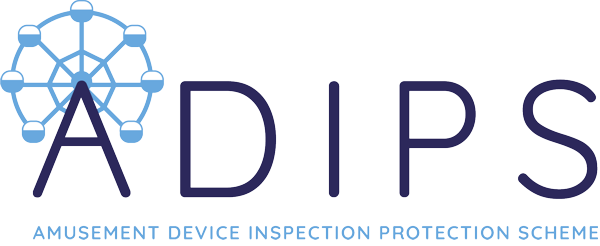Five steps to a risk assessment
 Did you choose which type of shoes to wear this morning based on what you were to do today? Boots? Flat soles? Wellies or heels?
Did you choose which type of shoes to wear this morning based on what you were to do today? Boots? Flat soles? Wellies or heels?
Did you look both ways and listen for traffic when you crossed the road?
Did you wear gloves or made damn sure that your fingers were well out of the way when something extremely heavy was being moved?
Of course you did… and that’s you making a risk assessment. Obviously, you did not write this down as it’s common sense but the concept is the same.
If we break this down into a format that the Health and Safety Executive (HSE) advises, there are five steps to a risk assessment. These five steps work just as well with simple tasks on your rides and stalls as well as on some serious operations out there such as on oil rigs and nuclear power stations – the principles are still the same.
1 Identify hazards
Firstly, what is a hazard? This is something that can cause harm. Imagine Laurel and Hardy with a piano hanging out of a building. Quite a hazard don’t you think? How it is going to harm you? well better not stand underneath – that’s all I can say!
2 Assess the risks
OK, what are the real chances that the piano is going to land on your head? This is called assessing the risk or probability. It’s a bit like the bookmaker working out the odds of a horse winning on the Grand National. 100-to-1 or 2-to-1?
So if the piano is hanging over a busy high street or packed fair, then the changes of a rope fail with the piano landing on someone is quite high. However, if it was hanging over a canal then the chances of hitting someone are very low.
We are not just done with this yet though…. because we also need to assess the severity of what will happen to the person if the rope snaps and it lands on them. If it were feather pillows then nothing really to lose sleep over. A piano, someone’s going to get squished. A nuclear missile…. good night, all!
So we decide how likely it is that someone could be harmed and how serious it could be.
3 Control the risks
Now going back to the piano scenario, we all agree that a piano landing on someone is pretty serious stuff. So the law wants you to make efforts to make sure nothing goes wrong. So have a think, what could you do to make it safer?
Ensure the rope is strong enough, new and tested? Yup, but we still have to assume the rope will break, therefore we need to ensure no one is standing underneath, (obviously) e.g. by installing barriers, doing the lifting when no one is around, having staff present telling the public to cross to the other path etc. OR – simply don’t do the lift in the first place! Dismantle the piano in the house and take it out piece by piece ‘Derr!’
Reality check – Put the controls you have identified in place. You’re not expected to eliminate all risks but you need to do everything ‘reasonably practicable’ to protect people from harm. This means balancing the level of risk against the measures needed to control the real risk in terms of money, time or trouble.
4 Record your findings
If you employ five or more people, you must record your significant findings for your tasks, in a risk assessment including the hazards (things that may cause harm), who might be harmed and what you are doing to control the risks.
You will already have risk assessments in place for large rides and risky activities, your catering unit and possibly for the overall fair as a lease. Even if you don’t legally need to have a written version, it is advisable that you do. The HSE have example templates that are free to download and use.
5 Review the controls
You must review the controls you have put in place to make sure they are working. You should also review them if:
- they may no longer be effective
- there are changes in the device or task that could lead to new risks such as changes to: staff /a process /the substances or equipment used etc.
- also, if your workers have spotted any problems or there have been any accidents or near misses.
You need to update your risk assessment record with any changes you make.
The law requiring risk assessment is the Management of Health and Safety at Work Regulations 1999.
If you have any queries about this or another health and safety issue you need to address with your fairground, please get in touch.
This article is by ADIPS general manager Carl Hagemann and first appeared in World’s Fair.
Recent Posts
Archives
- April 2024
- March 2024
- December 2023
- October 2023
- August 2023
- July 2023
- May 2023
- March 2023
- February 2023
- January 2023
- December 2022
- April 2021
- April 2020
- March 2019
- September 2018
- August 2018
- October 2017
- September 2017
- May 2017
- April 2017
- March 2017
- December 2016
- September 2016
- August 2016
- June 2016
- February 2016
- August 2015
- July 2015
- May 2015
- April 2015
- February 2015
- January 2015
- September 2014
- August 2014
- March 2014
- January 2014
- December 2013
- November 2013
- October 2013
- September 2013
- August 2013
- July 2013
- June 2013
- May 2013
- February 2013
- December 2012
- January 2012
- January 2011





